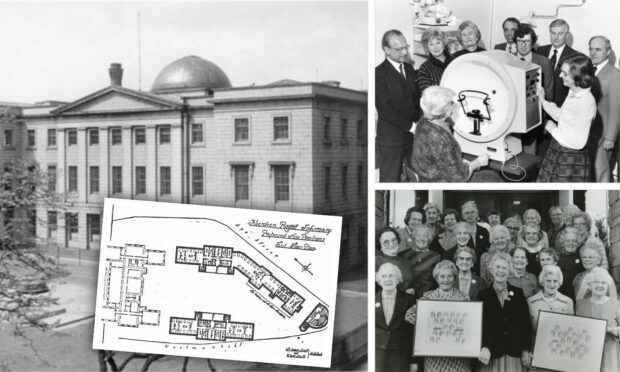Woolmanhill Hospital was Aberdeen’s original royal infirmary on the outskirts of the city when it was established in 1739.
The physical building opened in 1742, but was later rebuilt in the neoclassical style to a design conceived by Aberdeen architect Archibald Simpson during the 1800s.
The main building with its elegant dome was the Simpson Building, and subsequent additions and extensions over the years saw the complex grow considerably bigger.
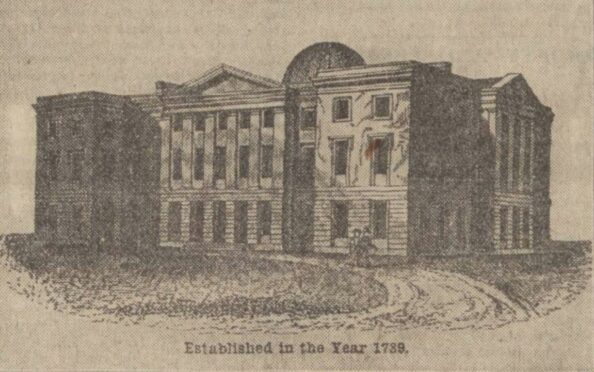
By this time, Aberdeen had also grown around the hospital and it was no longer on the fringes of the city, but in the heart of it.
Join us as we take a step back in time and looking at the changing times of Woolmanhill Hospital.
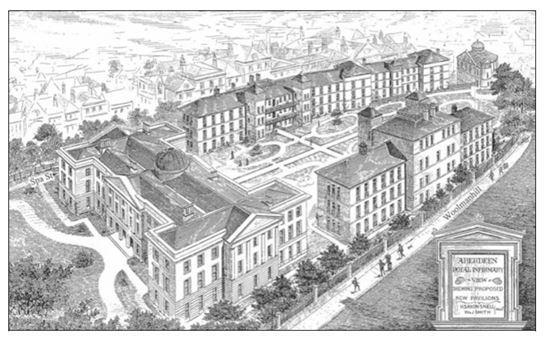
This image above shows an early illustration of the proposed development of the Woolmanhill Hospital site in 1887.
It underwent another significant redevelopment in 1892 with the addition of the Jubilee extensions which comprised of surgical and pathological blocks on the site of old buildings on Spa Street.
The main building was turned into an administration block as well as accommodations for servants and nurses.
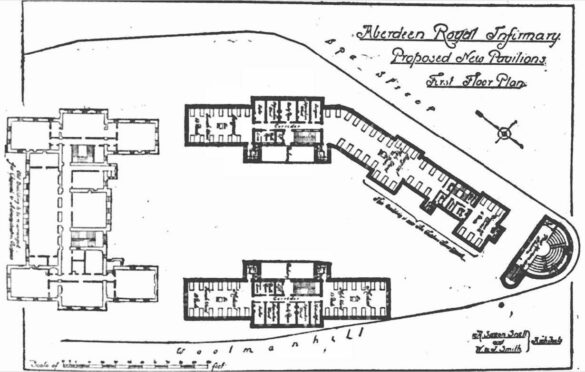
All of the buildings to the right of the original ‘H-shaped’ block were new additions as part of the Jubilee Extensions.
The new operating theatres at the north of the site were literally that – theatres that could accommodate 200 students in a specially-built semi-circular viewing gallery.
Meanwhile, the pathological block had a mortuary and funeral waiting room, and funerals would be conducted in the courtyard.
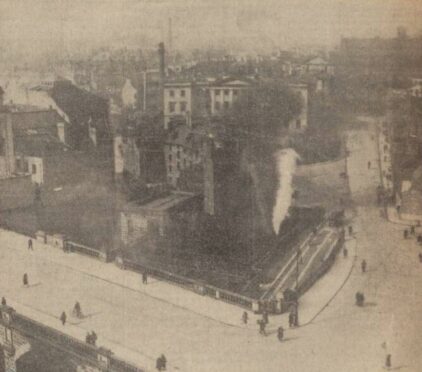
As the hospital moved into the 20th Century, it was becoming increasingly “hemmed in” by the busy city centre.
This unusual view of Woolmanhill from the Rosemount Viaduct shows the hospital disappearing behind buildings, smoke and stour.
Almost Lowry-like in its industrial depiction of Victorian Aberdeen, proposals were soon made to build a new infirmary on land at Foresterhill.
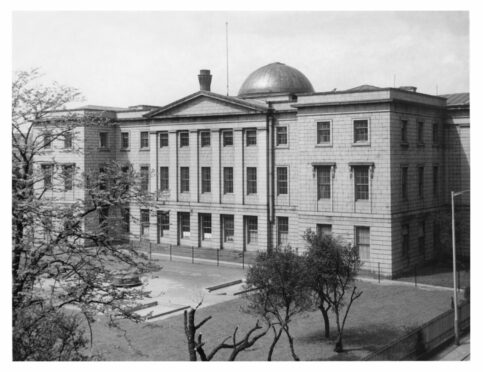 The new Aberdeen Royal Infirmary opened at Foresterhill in 1936, the country location was deemed much more suitable for recovering patients.
The new Aberdeen Royal Infirmary opened at Foresterhill in 1936, the country location was deemed much more suitable for recovering patients.
But the hospital at Woolmanhill continued to play an important role in healthcare in the city, and was renamed Woolmanhill Hospital.
This photo, above, shows Woolmanhill with its new copper dome in 1957.
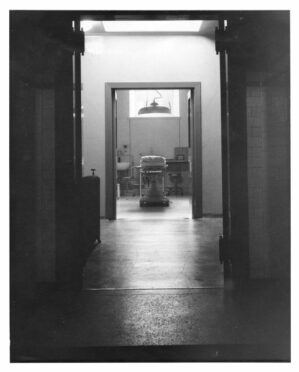
Initially it was proposed the old infirmary could be turned into a dedicated rheumatoid hospital, but it remained in use as a hospital supporting ARI.
This atmospheric photo from 1961 shows a view into one of the operating theatres in the busy casualty department at Woolmanhill.
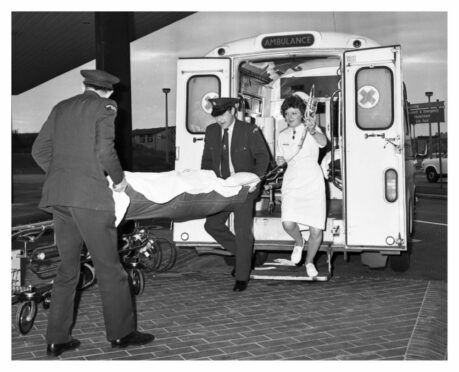
The accident and emergency department at Woolmanhill Hospital closed in October 1978.
This photo, above, shows the final patient being transferred from Woolmanhill to Foresterhill, aided by staff nurse Ann Stearn and ambulancemen John Cruickshank and John Guyan.
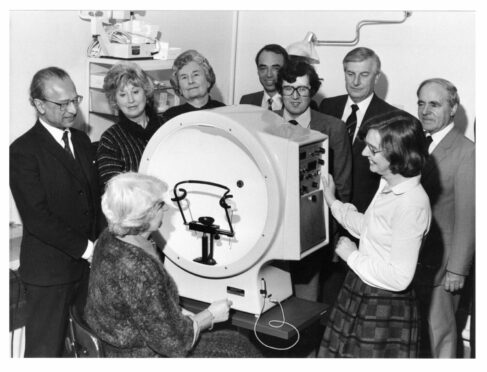
Woolmanhill continued in its role as an NHS Grampian hospital, but was no longer at the frontline of casualty cases.
Instead it housed an ear, nose and throat (ENT) department, and extensive eye clinic facilities.
This photo from 1983 shows the new £10,000 automated-field detector which had just been presented to the Woolmanhill Eye Department.
Vice-chairman of the Grampian branch of Tenovus-Scotland, Mary MacKenzie sits in the hot seat as Dr Prabhat Ray, left, and orthoptist Violet Smith, right, look on.
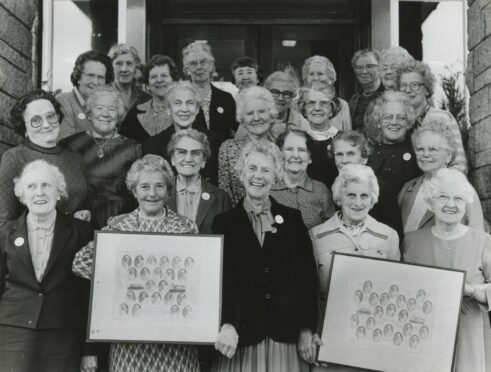
It was smiles all round as these student nurses from 1926-32 enjoyed a reunion at the Tree Tops Hotel in September 1985.
There was plenty of catching up to do as more than half a century had passed since they all worked together at Woolmanhill, with most of them living at the night nurse’s home on Albyn Terrace.
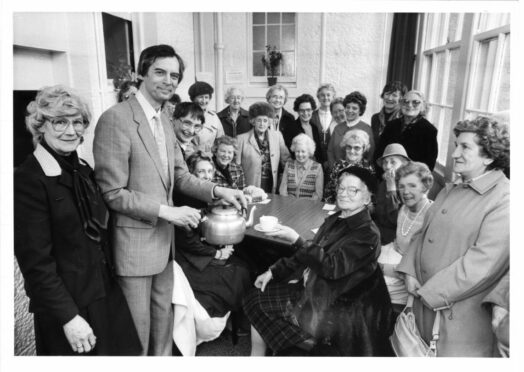
Tea and sympathy is often the answer in a crisis, and the Women’s Royal Voluntary Service canteen at Woolmanhill would have been a busy place over the years.
The canteen’s organiser Alison Angus was treated to a cup of tea for a change on the occasion of its refurbishment in 1986.
Performing the reopening ceremony was Nan Adams, far left, regional hospital organiser in Grampian.
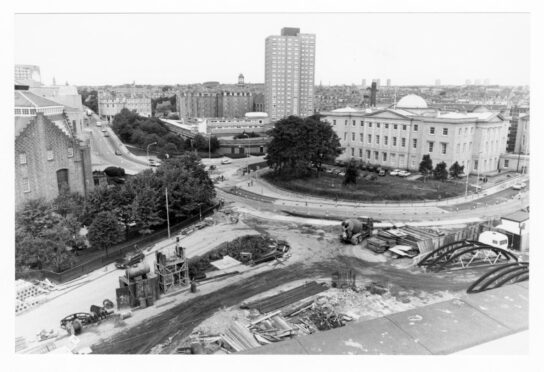
It was all change around Woolmanhill in 1992 as old buildings and roads were cleared for the Denburn dual carriageway improvement scheme.
NHS Grampian made the decision to close the hospital in 1999 and by the following year there were no inpatient beds left at Woolmanhill.
A phased closure saw departments moved to other NHS sites in Aberdeen, and slowly the hospital was emptied of its osteoporosis facilities, diabetic clinic and phsyiotherapy services.
The final departments to leave before the doors were closed on 278 years of medical services at Woolmanhill were the ENT and audiology clinics.
Woolmanhill has been at the centre of various planning proposals over the years, including the development of a hotel and more recently, suggestions it could house a medical museum.
If you enjoyed this, you might like:
